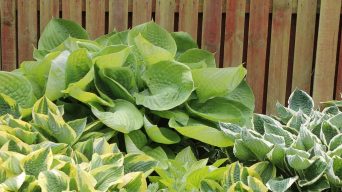ZZ plants, or Zamioculcas zamiifolia, are beautiful and easy to care for houseplants. But even the most low-maintenance plant can benefit from some help regarding growth.
ZZ plants are slow-growing, so if you’re looking for a plant that will grow quickly, this isn’t the one for you.
However, you can do a few things to help your Zamioculcas zamiifolia reach its full potential and grow as fast as possible.
This article will give you 10 tips on how to make ZZ plants grow faster.
How To Make Your ZZ Plant Grow Faster
To help your ZZ plant grow faster, you must provide the plant with the proper care. This includes adding the right amount of water, using the correct type of fertilizer, getting enough sunlight, and more.
Here are ten tips that will help your ZZ plant grow faster:
1. Fertilize as Needed
ZZ plants are slow-growing, so they don’t need a lot of fertilizer. Too much fertilizer can harm the plant.
Only fertilize your ZZ plant during the growing season, usually in spring and summer. Use a balanced fertilizer made for houseplants, and follow the directions on the package.
This provides the plant with the nutrients it needs to grow without overdoing it, leading to a healthier plant that will grow faster.
2. Prune Regularly
Pruning regularly is an essential part of caring for ZZ plants.
Pruning encourages new growth and helps to prevent the ZZ plant from becoming leggy.
When you prune your ZZ plant, you remove older leaves and stems at the base of the plant. This allows you to expose the newer leaves and buds, which receive a higher concentration of nutrients from the soil.
By allowing these younger leaves and buds to get more sunlight and moisture, you stimulate faster growth in your ZZ plant.
Additionally, pruning prevents older leaves from taking up too much energy, which could result in less overall growth for the plant.
Pruning is essential for encouraging healthy and vigorous growth in ZZ plants.
3. Water Deeply and Infrequently
ZZ plants are native to Africa and grow in dry and sandy conditions. This means that they are very tolerant of drought and can survive for long periods without water.
Overwatering is one of the most common ways people kill their ZZ plants.
When you water your plant, water it deeply and infrequently. Allow the soil to dry out completely in between waterings.
Deep watering means you should water the plant until water comes out of the drainage holes at the bottom of the pot. This ensures that the roots are getting enough moisture.
Watering deeply and infrequently prevents root rot and encourages faster growth in your ZZ plant.
4. Provide Enough Sunlight
ZZ plants need bright indirect light to grow. This means they should be placed in a spot where they will receive plenty of light, not direct sunlight.
If you live in a sunny climate, you should place your plant in an area that only receives partial sun. This will prevent the leaves from scorching.
When placing your plant, rotate it regularly so that all sides of the plant get an equal amount of light.
If your plant isn’t getting enough sunlight, it will grow more slowly. Providing enough light will encourage faster growth in your ZZ plant.
5. Provide the Right Temperature
ZZ plants do best in warm temperatures. They should be kept in an area between 60 and 75 degrees Fahrenheit.
If the temperature gets too cold, the plant will go into dormancy and stop growing.
Additionally, ZZ plants are sensitive to drafts. They should not be placed in an area where there is a draft from a door or window.
Providing the right temperature will encourage faster growth in your ZZ plant.
6. Provide the Right Humidity
ZZ plants prefer a humid environment. They should be kept in an area with 50% or higher relative humidity.
If the air in your home is too dry, you can increase the humidity around your plant by placing it on a pebble tray. A pebble tray is a shallow tray filled with pebbles and water. As the water evaporates, it will increase the humidity around the plant.
You can also use a humidifier to increase the humidity in the room. However, place the humidifier far away from the plant so the leaves don’t get wet.
If the air is too dry, your plant will grow more slowly. Providing the proper humidity will encourage faster growth in your ZZ plant.
7. Choose the Right Potting Soil
When potting your ZZ plant, choosing suitable potting soil is essential. ZZ plants prefer a well-drained, sandy potting mix.
You can purchase a potting mix specifically for cacti and succulents or make your own.
Mix equal parts of sand, perlite, and peat moss to make your own potting mix. This mix will provide the perfect amount of drainage for your ZZ plant.
8. Repot Every Few Years
Your ZZ plant must be repotted into a larger pot as it grows. Repotting gives the roots room to grow and allows the plant to continue growing.
When repotting, choose a pot that is only 1-2 inches wider than the current pot. This will prevent the roots from becoming pot-bound.
By repotting, you also have a chance to refresh the potting mix. With time, the potting mix will become compacted and no longer provide adequate drainage and nutrients to the plant.
9. Keep Your Plants Free From Pests
If your plant is infested with pests, it will grow more slowly. This is because pests can weaken and stress out your plants, causing them to grow less quickly than they usually would.
Additionally, pests can cause severe damage to your plant’s leaves, reducing its vitality and making it more vulnerable to disease and other issues.
To prevent this, regularly check your plant for pests and remove them as soon as possible.
The most common pests that affect ZZ plants are mealybugs, aphids, and spider mites. These pests can be removed by wiping them off with a damp cloth or using a cotton swab dipped in rubbing alcohol.
If the infestation is severe, you may need to use an insecticide. A safer option is to use a neem oil solution.
Neem oil is a natural insecticide that will kill pests without harming your plant.
10. Keep Your Plants Healthy and Free From Diseases
A healthy ZZ plant will grow more quickly than a sick plant. This is because a healthy plant has more energy to put toward growth.
To keep your plants healthy, it’s essential to check them regularly for diseases. The most common diseases that affect ZZ plants are root rot and leaf spot.
Excessive watering leads to root rot in ZZ plants, whereas waterlogged soil or inadequate drainage is responsible for leaf spot.
To prevent these diseases, make sure to water your plants only when the soil is dry, and choose a pot with good drainage.
If your plant does become sick, you can treat it with a fungicide. A safer option is to use a copper fungicide.
Copper fungicide is a natural fungicide that will kill diseases without harming your plant.
How Fast Do ZZ Plants Grow?
The ZZ plant is a lovely tropical plant known for its slow growth rate. In general, you can expect your ZZ plant to grow at a rate of around 6 inches per month.
However, during the growing season (spring and summer), your ZZ plant may grow faster, around 8 inches per month.
Some factors can affect the growth rate of your ZZ plant, including the type of soil you use, the amount of sunlight it receives, and the amount of water you give it.
The best way to ensure your ZZ plant grows at its fastest possible rate is to provide it with the ideal growing conditions.
By following the tips in this article, you can give your ZZ plant the best chance of growing quickly and thriving.
Why Is My ZZ Plant Not Growing?
If your ZZ plant is growing slower than you would like, there are a few reasons.
The most common reasons are:
- The plant needs more water. ZZ plants must be watered about once a week or when the soil is dry.
- The plant needs more sunlight. ZZ plants need to be in a bright, sunny spot. However, they should not be in direct sunlight, as this can scorch the leaves.
- The plant needs to get more nutrients. ZZ plants need to be fertilized about once a month during the growing season.
- The plant is pot-bound. When a plant becomes pot-bound, the roots start to grow in circles around the edge of the pot. This can restrict the growth of the plant.
- The plant is stressed. ZZ plants can be sensitive to environmental changes, such as temperature or humidity. If your plant is stressed, it will stop growing until the stress is removed.
If you need clarification on why your Zamioculcas zamiifolia is not growing, try checking for these common problems. By correcting these issues, you can help your plant start growing again.
Final Thoughts
It’s easy to see why the ZZ plant is such a popular houseplant. It’s low-maintenance, tough, and easy to care for.
However, a ZZ plant is a slow grower plant. If you’re looking for a plant that will grow quickly, there may be better choices than the ZZ plant.
That being said, with proper care, you can encourage your ZZ plant to grow faster. Following the tips in this article can help your ZZ plant reach its full potential.







